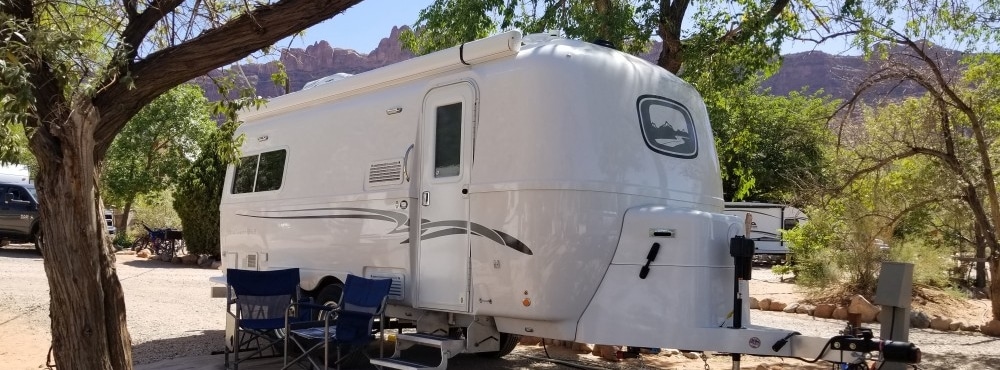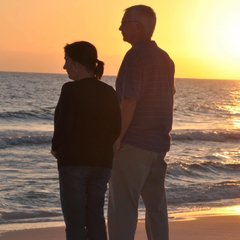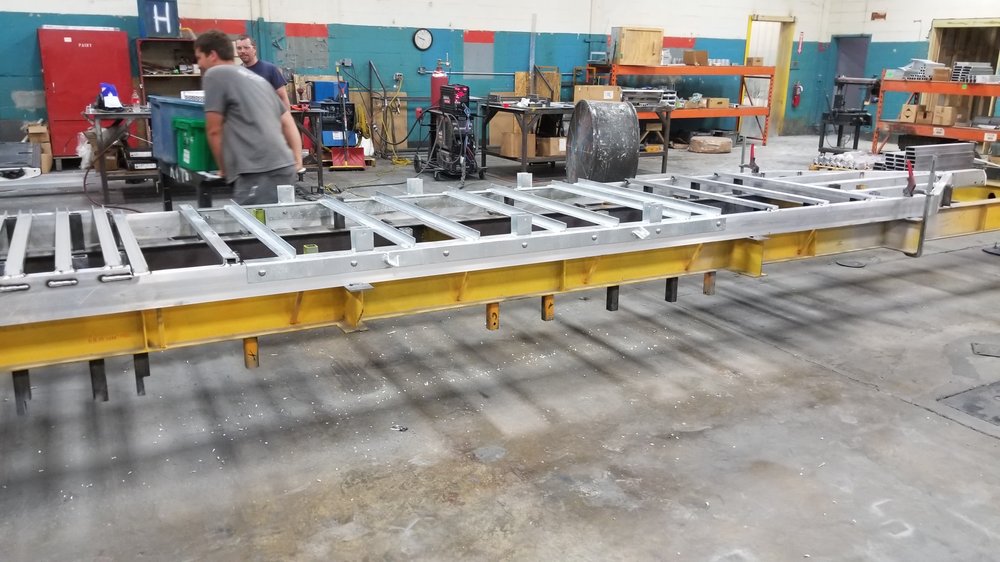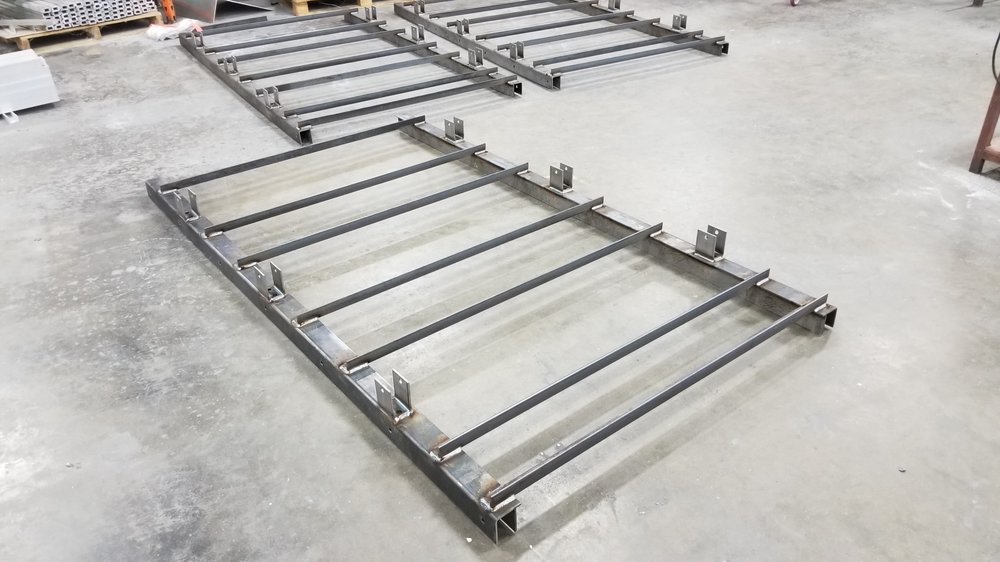-
Posts
312 -
Joined
-
Last visited
-
Days Won
15
Posts posted by KountryKamper
-
-
I know some will disagree with me on this but this is what works for me.
I am on my 4th Dill system on the Oliver. This time I just purchased replacement sensors and stems as I kept my head unit from the system on our Escape. I have never added one to the spare and I don't rotate the spare to the ground. I have never found a need to rotate trailer tires. On a properly set up trailer they should all wear the same. There are no driving wheels or turning wheels on a trailer. I keep my spare at 80 psi and since I run my tires at 60-65 psi, I only need to check it once a year. I am from the school that unless you put on lots and lots of miles you will not wear out trailer tires. They will usually age out first. I replace all my tires on a 5 year cycle. I have been using the Dill for 11 years and never had a problem so I am very comfortable with their warranty.
Here is the proper page for the Dill trailer systems.
http://dillaircontrols.com/dill/category/products/tpms/trailer-tpms/
More info
http://www.trailertpms.com/home.html
The one for 4 tires is the 1504-416 and I purchased it from Tire Rack. The head unit will monitor up to 10 tires depending on how you program it. Just buy extra sensors.
Replacement parts
https://tires.tirerack.com/tires/Dill%20Tpms
-
 4
4
-
-
Ollie has one fitting that is a little hard to pump grease into. Take a little weight off of that side with Ollie’s jack and fitting takes grease easier.
I found the same thing.
-
Tell Martha this is a cheap one. A rag. ?
-
 2
2
-
-
Yes, we have a fried that flooded their camper. We we sitting at the table eating lunch and they had been gone for the day. We looked over and water was running out of their camper. It had been cold that night and their hose froze. They got up and their kid turned on the bathroom faucet and no water came out. Problem was she did not turn the faucet off and later when the hose unthawed the water started flowing and in no time the tanks were full and the rest is history and so was their stick built camper.
It may never happen but something can leak or break at anytime and you never want to see the sight of water running out. Its been about 15 years but I will never forget that even though it was not ours.
-
 1
1
-
-
Rounded mine off and put a piece of heat shrink over the nut.
-
I was hoping to use the small tubes while traveling but guess not. That seems like a lot of grease for bushings. Mine only took 2 squirts each but I don't have many miles on the trailer yet.
-
 1
1
-
-
Mine are the same way and very sharp. I will need to smooth them off some. Thanks for posting this.
-
I can receive the XM singles through the fiberglass. Maybe try it in the cabinet inside first.
-
Did you use a 3 oz tube or a large one?
-
Charlie sells his stuff through Little House Customs too and the fridge guard can be purchased there.
http://littlehousecustoms.com/store.html
He also makes a fridge spill containment tray for the bottom of the fridge that will fit our fridge. It works great keeping drinks and things from rolling around the bottom and contains any spills.
-
 3
3
-
-
We would like to go on the Level 2. Whatever day is fine with us.
-
Congrats guys! Look forward to seeing you at the rally.
-
I have used the Dill 1504-416 on our last 3 trailers and now on the Oliver. The sensors are mounted inside the tire so it requires removing the tires and having a shop install them and rebalance. It also has a antenna the can be mounted under the tow vehicle and ran up into the cab if you have reception problems. All in all a little more work to install but a very nice and accurate system. It is available from tire rack.
http://dillaircontrols.com/dill/category/products/tpms/trailer-tpms/
-
-
I just looked at ours and it is the same way. That seal appears the be a seal to keep water from running down the side of the camper from under the awning. It looks like the part touching the camper shell is what is important. The black plastic things appear to hold the awning in place when closed. I don't think the screws being exposed are a big deal but I am curious to hear what Jason says. Let us know what he tells you.
-
 1
1
-
-
I use a extendable RV brush to wash it and do my best to wash it after every trip. I have used Meguiars marine wax wax on all our fiberglass trailers once a year. I just finished waxing the Oliver for the first time. I did the roof and front one day and the sides the next day. Big job but it looks great.
-
 1
1
-
-
On our 2018 it is horizontal next to the pump.
-
 1
1
-
 1
1
-
-
My 2018 owners manual supplied at delivery says to use the Jack to change a tire and says nothing about jacking on the corner of the steel frame.
Edit
I see the 2018 manual has now been posted on the Oliver University and it states to place a jack on the steel subframe so it looks like Oliver has changed the owners manual and answered the original question.
-
Will one 3oz cartridge complete service on both sides of the EZ Flex?
-
We use the EcoSeb also and it is great! Highly recommend.
Our EcoSeb just arrived today and I’m very pleased with how quiet it is on low and with the small size. I would also like to know where current owners place the unit in their OTT’s? It’s small enough to store in the OTT closet with ease when not in use and seems big enough to work effectively with the trailer. At the moment I’m giving it try in our laundry room but the real test will be in April on our Alaska trip. I can’t wait to get back on the road. Hap
Since we have a truck we carry ours in the bed.
-
-
The reason I asked the question was at orientation I was told to only use the jacks to "stabilize" the trailer and not to lift the trailer off the ground by Phil. I asked where to jack the trailer as I do my own brake and bearing service. I was told to try to put the jack on the subframe. There is very little room on the subframe and my jack will not fit in the area Phil pointed to. Then when I read the owners manual I saw it said to change a tire by using the jacks. All my past trailers always had explicit statements about not using the "stabilizers" to raise the trailer off the ground.
Since Phil told me they were stabilizers and should not be used to raise the trailer I posted the question here. It appears that some of you feel they are jacks and can be used for this purpose. Is this just a opinion you have come to on your own or are you assuming this from the tire changing procedure in the owners manual or were you told raising the trailer with the jacks was ok?
So I ask, are they stabilizers or are they jacks? I would like to know how OTT jacks it up when doing service? One wheel at a time?
-
I saw this Truma device at the RV show in Tampa last month. It looked interesting and doesn’t have any weather issues as it is kept in your TV or OTT. Will it survive the inevitable drop? $69.99 from Truma. Mike
I like that even better and just ordered one. Thanks for the info.
-
Congrats and sounds like all went well on your shake out. Great looking Camper to make many more memories in.
-
 2
2
-





2018 Rally Email
in Events & Rallies
Posted
Last info I got it was over 80.